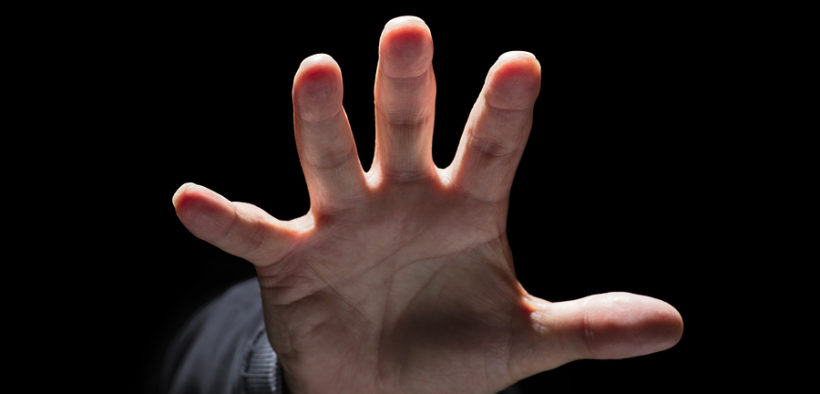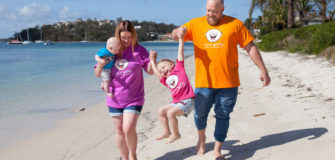Domestic violence in Australia is a national crisis — and it’s also our national shame. On average, one woman per week is murdered by her current or former partner. Australian police deal with domestic violence every 2 minutes. It is the leading cause of illness, disability and premature death for women ages 18-44.
Domestic violence is a stain on our families, our communities and our country. It has no boundaries – it affects the old, the young, wealthy families and those without financial means. It crosses racial and cultural lines and exists in our dense cities and rural towns. It has the same traumatic effect on all victims and sets into motion a cycle of violence, mental and physical health challenges and the increased likelihood of experiencing homelessness throughout their lives.
It is a tragic fact that in Australia, domestic violence is the leading cause of homelessness for women and children. 72,000 women, 34,000 children and 9,000 men sought homelessness services in 2016-2017 as a result of family violence.
It breaks families apart on a daily basis and exposes millions of Australians to life-changing trauma from a very young age. Statistics show that children of mothers experiencing domestic abuse have greater rates of emotional, psychological and social problems than other children. Experiencing domestic violence as a child is an indicator for future homelessness as 1 in 3 young people seeking homelessness services and support have experienced in-home violence.
There are hundreds of not-for-profits around the country who work tirelessly to support families experiencing domestic violence and homelessness. Much of the support offered is in the form of temporary shelter. For women and children who experience domestic abuse from a partner or parent, the decision to leave is a terrifying and risky one. They have to weigh up the risks and dangers of staying in a violent home compared with the risks and dangers of leaving their home and experiencing homelessness. For many, the fear of homelessness overrides their urge to leave a violent partner. It’s a terrible dilemma that thousands of Australians are forced to make every day.
The Department of Health and Human Services say some of the work required is in the area of early intervention. If support workers can identify key indicators and risk factors of domestic abuse and seek to provide support or intervention at an early stage, more women may feel empowered to leave abusive partners and seek housing support.
For children who are in care, their chances of experiencing homelessness are increased. One third of young people exiting care services between 2013-2015 accessed homelessness services. The key is to intervene earlier, provide tailored, flexible assistance to ensure the safety of children and families. The DHHS also support the principle that all support offered is trauma-informed and has therapeutic intent.
For their part, the incumbent Government pledged an extra $328 million earlier this year to address domestic violence with $82 million going towards training health workers to better identify domestic violence victims and $62 million towards the 1800RESPECT counselling hotline to match growing demand. $78 million will support emergency accommodation and temporary housing which will assist an extra 6,500 women and children annually.
It’s estimated that over 1 million women have or will have experienced violence or emotional abuse this year. The damaging effects of violence lead to long-term health, social and economic hardships and, as we’ve seen too often, it can result in death. Violence has a broad impact on our communities, on our economies and on our ability to progress as a nation. Addressing domestic violence in our communities must be a national priority. We must all continue to support the meaningful and life-saving work of hundreds of community organisations and not for profits around the country that care for our neighbours, friends and strangers on a daily basis in their fight to break the cycle of violence.
About the Contributor:
Andrew Cairns is the CEO of Community Sector Banking and believes that business can and should be a force for good. A firm believer in social responsibility and community empowerment, Community Sector Banking serves nearly 16,500 not-for-profit customers around Australia who work in the area of housing, health, and social services.
Have you got a news idea or a commentary you would like to share with us? Get in touch: TSeditorial@thrdstaging.wpengine.com
Andrew Cairns is the CEO of Community Sector Banking – the not-for-profit banking specialists supporting more than 20,000 organisations
























































































































































The Aboriginal Males Healing Centre (AMHC) is a charity located in Newman in the Pilbara region of Western Australia. The objective of the AMHC is to provide mandatory residential healing and well-being spaces for Aboriginal and Torres Strait Islander men who use intimate partner violence (IPV).
We are providing a mandatory healing shelter for the perpetrator, thus removing the offender from the family home. Therefore, police in attendance will have an alternative. Safely encourage referral of the perpetrator to the healing shelter, thus defusing the short-term behavioural impact of the perpetrator.
Secondly, to offer an alternative to incarceration for men that use violence against women and children. The centre aims to heal these men and break the cycle of violence and provide a safe and secure outcome for women and children. The safety of women and children is our paramount concern.
The AMHC will offer a mandatory 12-month residential healing program incorporating western clinical care and rehabilitation methods underpinned by Aboriginal culture and lore, complimented by a 4-year outreach care plan to deter relapse. All applications are developed and delivered by respected Senior Elders in collaboration with the clinical team.
The build of the residential healing centre in Newman is a large-scale green-field project on 13.2 ha land 10 km South of Newman adjacent to the Newman airport. The architectural and engineering design is well underway and near completion. The AMHC project currently relies on the generous support and hard work of our patrons, the community, business, and government.
For the residential centre, the Shire of East Pilbara has kindly agreed to transfer a well-located and culturally significant parcel of land to AMHC. PM+D Architects and Matthews MacDonald Architects have developed a conceptual design and drawings (with considerable input from local Martu people). Arup Engineering has provided engineering design and advice. Indigenous Community Volunteers has provided broad support through experts working pro bono
We are currently seeking funding and support for the capital works and the ongoing operation of the centre and finalising regulatory requirement for the Development Application with the SoEP.
thank you for your comment on this opinion piece. We encourage all kinds of opinions and views, and please feel free to email tseditorial@thrdstaging.wpengine.com should you be interested in submitting your own opinion piece